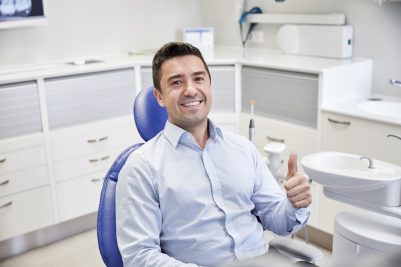
What to Know About Soft Tissue Laser Therapy
For many people, laser therapy for oral health issues is still an alien concept. However, the truth of the matter is soft tissue laser in periodontal treatments have been around for more than 20 years. It was first introduced in clinical establishments in 1994. It is also important to mention here that the use of laser in the oral cavity has been approved by the FDA. On the other hand, the American Dental Association still has a cautious optimism regarding the efficacy of soft tissue laser treatments.
Nevertheless, soft tissue laser therapy has become a popular outpatient dental procedure. Many dentists now recommend their patients this method against different periodontal ailments. So, let’ have a brief look at how soft tissue laser therapy is being used in the field of dentistry.
How Do Lasers Work in Dentistry?
This is the question most people want their dentists to answer when they hear about soft laser therapy for certain dental issues. We all know that the laser is an extra-energized light beam and it is used in the same capacity in dental procedures as well. For instance, its high energy is used to get rid of dead soft tissues that are not treatable anymore. Moreover, it is used in teeth whitening procedures to activate or enhance the effect of tooth-bleaching used in the treatment.
Also, the laser used for dental procedures is different from the one used in phototherapies against inflammation and different chronic pains.
Benefits of Soft Tissue Laser Therapy
Many patients get nervous when they come across the use of laser in the oral cavity. There is no need to worry regarding the harmful effects of lasers. Soft tissue lasers treatments are specially designed to ensure they don’t inflict any side effect to the teeth, gums and sensitive and soft teeth enamel.
In fact, there are multiple reasons why soft tissue laser is a better option than conventional drilling and surgical procedures.
Rule Out the Need of Anesthesia
Regular dental procedures can be quite painful and thus performed under anesthesia. In contrast, soft tissue therapies are exceedingly less painful. In some instances, dentists don’t even administer anesthesia to the patients before the commencement of the session.
Rule Out the Use of Drills and Scalpels
Dental surgeons need to make tissue incisions through scalpels and drills during some procedures. Many patients are petrified with the use of these surgical apparatus. Some of them even delay their treatments just because they are not prepared for drilling and cutting in their mouth. Soft tissue laser therapy provides a less invasive and less painful alternative to all those patients.
Better Preservation During Decay Removal Procedures
Tooth restoration is the procedure where adjacent healthy teeth are often affected during decay removal phase. The use of a soft laser instead of drill might also help in getting around the side effects of regular decay removal techniques.
It Entails Less Swelling and Bleeding
Soft laser therapies also have an edge over regular dental procedures because they involve lesser post-treatment swelling and bleeding.
Soft Tissue Laser Therapy in Shelby Twp., MI
Contact HPS Dental today to learn more about soft tissue laser therapy and if it’s the right option for you. Contact our office today at (248) 652-0024! We look forward to hearing from you!


